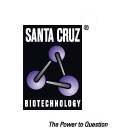| • |
Coat microtiter plates with target protein diluted in 50 mM carbonate buffer at pH 9.0. Optimal concentrations should be determined by titration, but for purified antigens 50 µl per well at 1 µg/ml is usually sufficient. Incubate overnight at 4º C covered with parafilm. |
| • |
Remove antigen solution. Add 200 μl/well of blocking buffer (PBS containing 1% BSA and 0.02% azide) to block non-specific protein binding. Incubate for 1–2 hours at room temperature, or overnight at 4º C. |
| • |
Remove blocking buffer. Wash once with PBS with 0.02% azide. Damp strip wells or plates are usually stable in resealable plastic storage bags for 4 weeks at 4º C. Before using, remove excess liquid. |
| • |
Add test antibody samples and controls at 50 µl/well diluted in blocking buffer. Antibodies may be serially diluted for determining titer or diluted to previously determined working concentration for screening assays or antigen quantitation. Incubate 1 hour at room temperature. |
| • |
Wash plates three times with PBS containing 0.05% Tween-20 (Tween-20: sc-29113), removing excess liquid as above. |
| • |
Add 50 µl/well of alkaline phosphatase conjugated secondary antibody (Conventional Secondary Antibodies for Western Blotting) diluted to 1:100–1:1000 in blocking buffer. Optimal antibody concentration is determined by titration. Incubate 1 hour at room temperature. |
| • |
Remove liquid in wells. Wash three times with PBS containing 0.05% Tween-20 and slap plate dry. |
| • |
Wash wells once with diethanolamine buffer (10 mM diethanolamine, 0.5 mM MgCl2 (pH 9.5) and remove liquid. |
| • |
Dilute substrate (PNPP, sc-3720) in diethanolamine buffer to a final concentration of 1 mg/ml. Add 50 µl/well. Allow to develop for 10–20 minutes or until positive control reaches an OD 405/490 of about 1.0. Stop reaction by adding 50 µl of 0.1 M EDTA (EDTA: sc-29092), pH 7.5. Read plates on microtiter plate reader at OD 405/490. |


